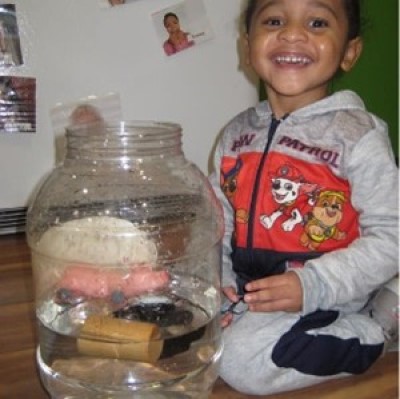 Here, a happy two year old at Apple Hill Academy enjoys
Here, a happy two year old at Apple Hill Academy enjoys
performing a hands-on “sink float” experiment. Half the fun was
having the kids predict what each object would do: sink or float.
Science tells us that the density of an object determines whether it will
sink or float in another substance. An object will float if it is less dense
than the liquid it is placed in, and will sink if it is denser than the
liquid.
After the children made predictions, they were given an opportunity to drop objects into the water to see what would happen. They observed that the
denser objects would sink, and the lighter ones would float. It is interesting that humans are all different weights and “densities” …. and yet, we all can float!
When we consider the science behind floating, it is a good time to
remember that it is never too early to teach a baby to float. According
to new guidelines from the American Academy of Pediatrics (AAP),
babies can begin swimming lessons at one year old. Previously,
the organization had advised against swim lessons for kids under
the age of four.
There are many benefits swimming provides to children. Swimming
keeps kids active now, and in the future, helps to prevent obesity. It also
teaches children perseverance, sportsmanship, goal-orientation, teamwork,
and how to handle winning and losing. But most important of all, when kids
learn water safety and swimming skills, it is an excellent predictor that
accidental drowning will be avoided. So, while “sink float” experiments get kids
thinking and “predicting,” — adults can become good predictors too:
by giving their kids swimming lessons at a young age.


